Top 10 Demonic Deities in Tibetan Buddhism
- by Eric
- Last Updated: 2024-09-19
The presence of demons is often crucial to religious systems. These terrifying Buddhist monsters don't just exist to scare you - they symbolize the mean and evil aspects of human nature. Tibetan Buddhists believe that everyone has a Buddha nature and can attain enlightenment, but also believe that humans are inherently prone to succumb to their basest desires such as greed, ego, lust, and anger. Scary demons from Buddhism often embody impure thoughts and desires that lead to negative behavior, although some are just scary reminders to only do good deeds.
Tibetan Buddhism is a branch of Buddhism that developed from the combination of its indigenous religious beliefs of Bon and Mahayana. Bon consists of shaman practices. It was gradually formed under the further self-development of the primitive Tibetan shamans of the Qinghai-Tibet Plateau. Buddhism, on the other, made its foothold in Tibet in the 6th to 8th centuries. Initially, the Buddhism type adapted by the Tibetans only included Indian figures like devas, yakshas, and asuras. But later, other local Bon Tibetan gods and spirits were incorporated into Buddhist practices and beliefs. In Buddhism, there's no concept of absolute evil demons as all sentient beings can improve their karma through practice.
Here are the top 10 demo-like deities, which can often be seen in Tibetan monasteries and treated as demons.
Mahakala (The Great Black One)
Mahākāla is a common deity of Buddhism and Hinduism. This deity is a manifestation of Shiva in Hinduism. In Vajrayana Buddhism, however, it is the protector deity. As Mahakali's spouse, she is very frightening. She is three-eyed with four arms. Mahakala, together with Mahakali, represent Brahman's destructive power, and they do not subscribe to any regulations or rules.
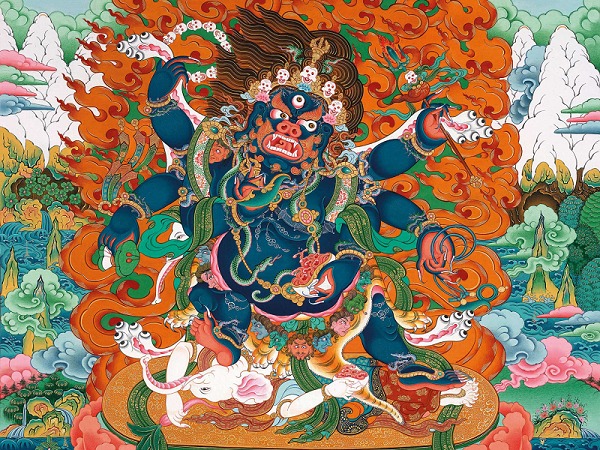
Both Mahakala and Mahakali have the power to dissolve even the existence of space and time into themselves, and they may exist as emptiness after the dissolution of the universe. They can annihilate creatures without mercy because they are the personifications of space and time.
Palden Lhamo (Principal Protectress of Tibet)
Palden Lhamo is an important female guardian deity of Tantric Buddhism. Palden Lhamo derived from the ancient Indian myth of Lakshmi, the goddess of wealth and prosperity. In Tibetan Buddhism, Lakshmi has both peaceful and wrathful forms. Palden Lhamo is regarded as the principal protectress of Tibet.
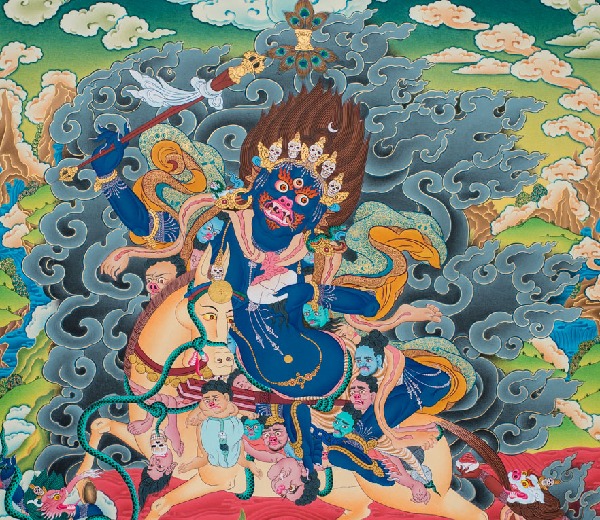
The fierce form is known as Palden Lhamo. She is usually depicted as deep blue in color and with red hair, riding side-saddle on a yellow mule. On her head, there are five human skulls. On the right ear, there is a small lion, which is said to symbolize listening to the scriptures, and on the left ear, a small snake represents wrathful. On her waist, she hangs a notebook, dedicated to recording bad things done by sentient beings, whose skin will be flayed. In her left hand, she holds a stick crafted from human bone to deal with the evil spirit Asura. In the right hand, she holds a skull bowl full of blood.
Yamāntaka (The Destroyer of Death)
Tibetan Buddhists conceptualized Yamāntaka as the conqueror of death. In the pantheon of Buddhist deities, there are several deities named Yamāntaka. Yet, Vajrabhairava is well-known among these deities. He is also included among the Anuttarayoga tantra deities widely known in Tibetan Buddhism's Gelug school.
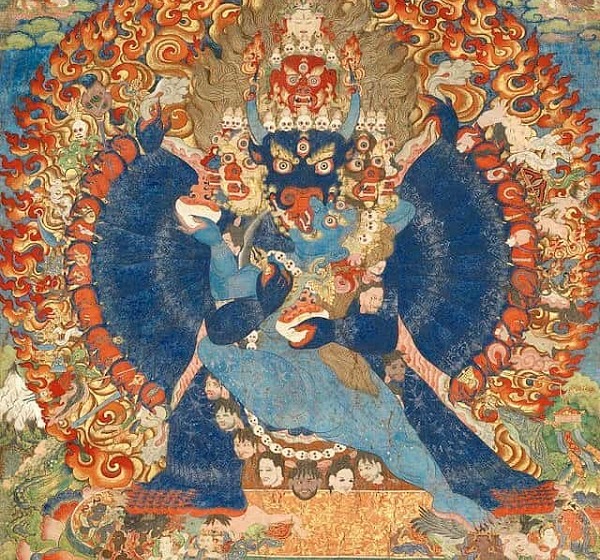
Tibetan artists depict Yamāntaka with a wrathful expression. He manifests himself in various forms with six faces, six legs, and six arms that hold different weapons while seated or standing. Each face comes with three eyes.
Yamaraja (The King of Hell)
Yamaraja is a wrathful god or Dharmapala. He is said to preside over hells (Narakas) and is believed to judge the dead. He also presides over saṃsāra (cycle of the afterlife). He can determine the goodness of a person in his life.
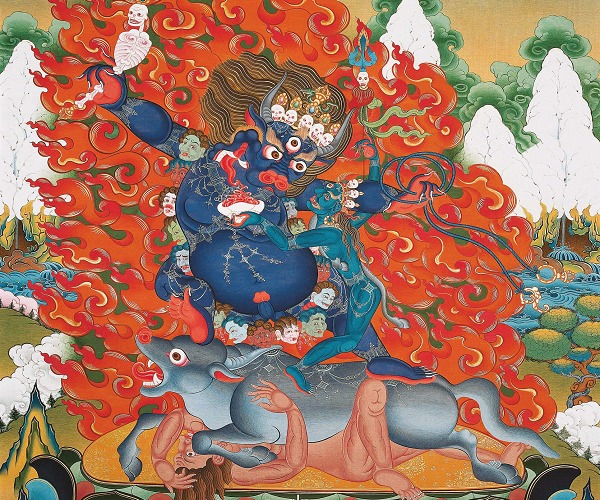
Modern Theravada depicts Yama as responsible for sending disease, old age, punishments, and even maladies and calamities to humans to warn them to behave well in their lives. When a person dies, Yama summons and examines that person. Then, Yama sends one to his/her commensurate rebirth.
Vaisravana (The God of Wealth)
Vaisravana is the god-king of Yakshas, a semi-divine natural spirit. He is regarded as the protector of the Lokapala (world). He is regarded too as the overlord of many semi-divine beings. He is also considered the owner of the world's treasures.
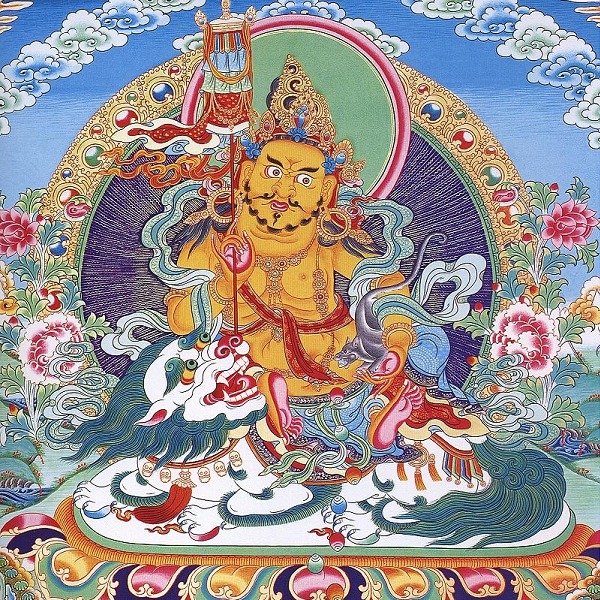
Depicted with jewels and a plump body, he is always shown as carrying a club and a money pot. He is described as having three legs, one eye, eight teeth, four arms, and three heads also appeared in recent Puranic texts.
In Buddhism, Vaisravana is referred to as Vaiśravaṇa or Jambhala. He is one of the 4 heavenly kings. He is also associated with Pañcika and his wife Hariti, the symbol of abundance.
Ekajati (Blue Tara)
Ekajati is also referred to as Māhacīnatārā. She is a fierce protector and a powerful one. Legend has it that she got her eye pierced by Padmasambhava to let her effectively subdue Tibetan demons. She is also known to be one of the 21 Taras, and the Blue Tara is the most powerful. Nyingma school considers her as a principal protector together with Vajrasadhu and Rahula.
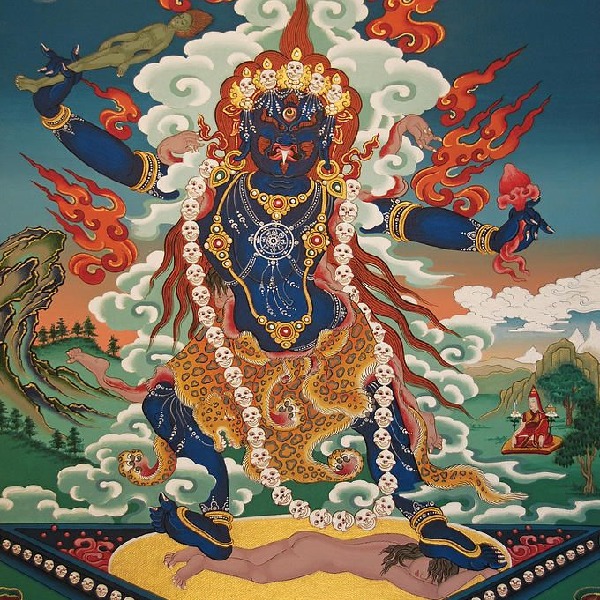
Her ascribed powers include divesting enemies of fear, removing personal hindrances to enlightenment, and spreading joy. She is also the Dzogchen teachings' principal guardian.
Beg-tse (The War Goddess)
Beg-tse is the lord of war. Characterized by orange-red hair and red skin with two arms, Beg-tse also has three blood-shot eyes, and her right hand wields a sword. He also carries in his right hand a human heart. Moreover, he carries a bow and arrow in his right hand and a halberd together with a banner. He also sports a chainmail shirt. Rikpay Lhamo, his consort, accompanies him along with Laihansorgodog, his main general.
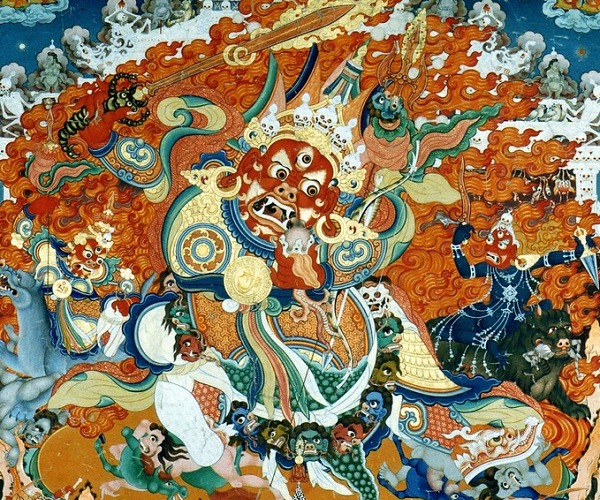
Tsui Marpo (Yasha)
Tsui Marpo, also known as [Yasha] and [Monster Red], is the son of the most ferocious Zanpu and witch in Tibet. He was originally the Dharma protector of the original Bon religion in Tibet and the leader of the powerful Yaksha army. After Guru Rinpoche arrived in Tibet, he subdued him, therefore Tui Marpo firmly guarded the oath of the Buddha's teachings, obeying the dispatch of Guru Rinpoche, and protecting Guru Rinpoche's preach and his disciples in the Nyingmapa lineage. He is the Dharma protector for the great wisdom of Nyingmapa.
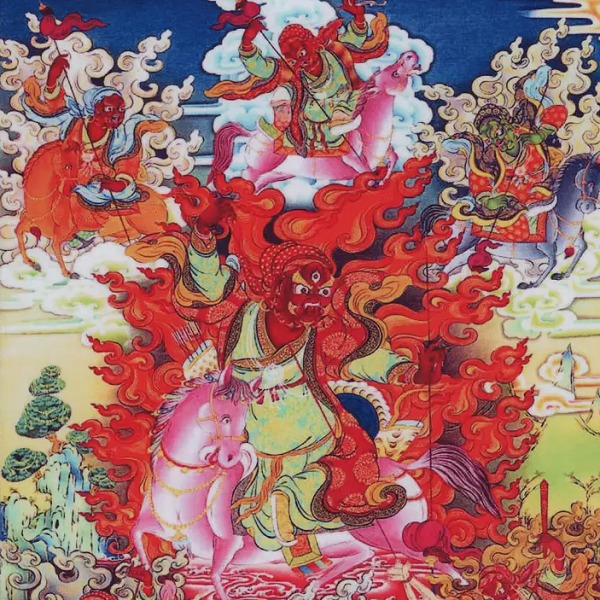
As the god in charge of life in the Three Realms, Tsui Marpo is also the god of wealth, the Incarnation of Avalokitesvara Bodhisattva, and the embodying compassion of Hayagriva. He looks extremely angry on the outside, and very merciful inside. Devoted prayers and offerings to Tsui Marpo will quickly obtain all kinds of favorable conditions such as wealth, power, and increased luck in this life, and in the next life, they will also receive all kinds of success and special help, and they also obtain the achievement of liberation from the world.
Hayagriva (Horse-headed Avatar)
Hayagriva is one of the most important deities in Vajrayana, the wrathful manifestation of Avalokiteshvara. He is named because he has the head of a horse. Horse-headed Avalokitesvara is the protector of the realm of animals in six realms of existence. Hayagriva is red all over, with three faces and eight arms, three eyes wide open, fangs exposed, red and yellow hair and beard standing up, showing the fearlessness of a lion. The three faces of Hayagriva represent emptiness and perception, the eight arms represent wisdom and compassion, the three rounded eyes represent the subduing of demons in the three realms, and the exposed fangs represent the deterrence of all demonic obstacles that hinder the movement of sentient beings. Tibetan Buddhists look to this spirit when they encounter difficulties in life. With his help, they can channel their frustrations to overcome any difficulties that arise in their path.
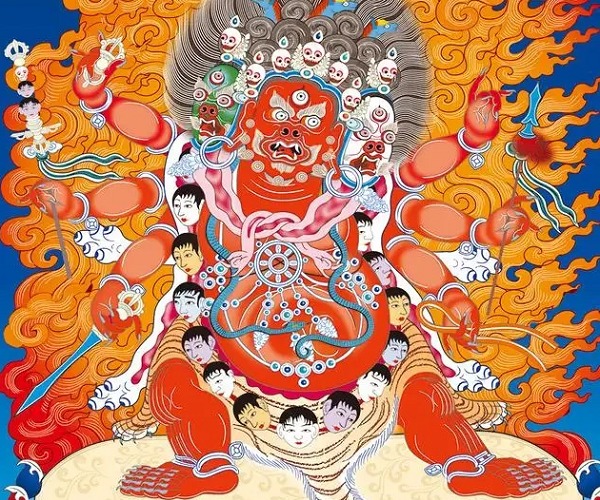
Panjara Mahakala (Protector of the Hevajra Cycle)
Panjara Mahakala is the special protector of the Hevajra cycle of teachings and the principal protector of the Sakya School of Tibetan Buddhism. In thangka pictures, Panjara Mahakala is painted in black and blue. In the statue, Panjara Mahakala is wrapped in gilt bronze, sitting in a squatting position, with his feet on the devil. He has one head and two arms, with a treasured cane in both arms, holding a sword in the right hand, and a skull bowl in the left hand. He wears a five-skull crown as a headdress, as well as a skull necklace and bone ornaments, with gemstones inlaid in many places, in the backdrop of flames. According to the Esoteric sutra, if you worship this deity every day, you and your family even your temples will not be disturbed by devils.
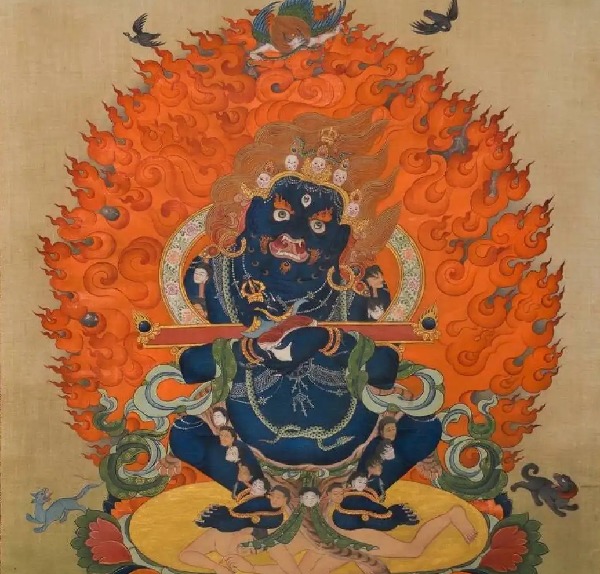
Related Articles
- Trekking in Tibet
- Top 10 Famous Temples of Nepal
- Nepal Tibet Map
- Tihar in Nepal
- Dashain Festival in Nepal
- Himalayan Mountains
- Top 10 Tibetan Monasteries
- 12 Tibetan Deities
- Top Five Main Beliefs of Tibetan Buddhism
- Tsurphu Monastery
Email response within 0.5~24 hours.


